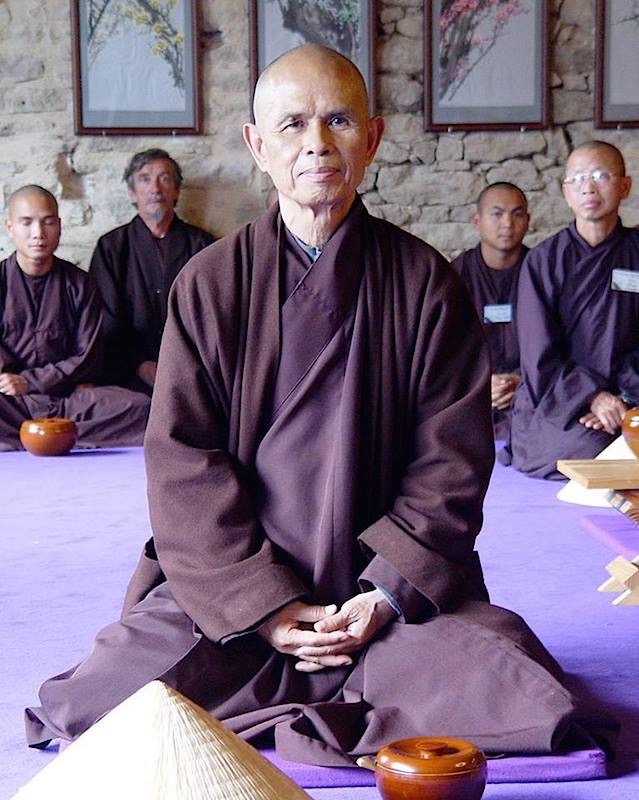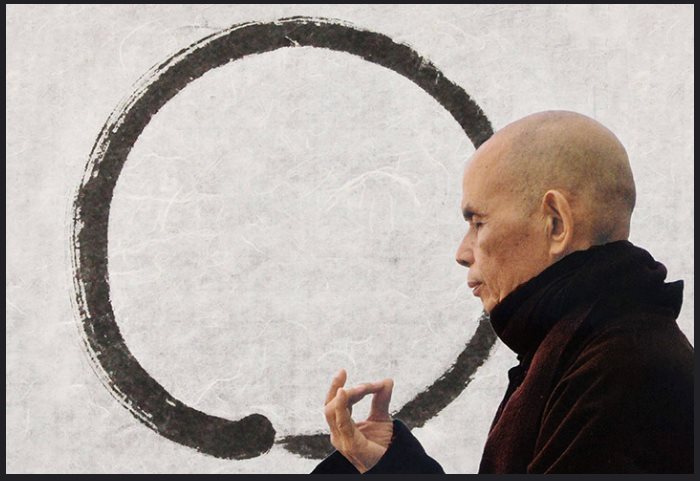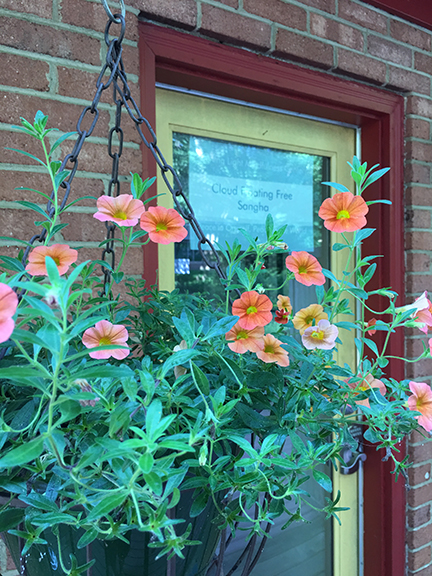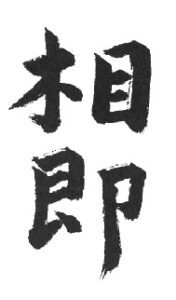by Pam Marraccini | Buddha, heart, love, Thich Nhat Hanh, Uncategorized, understanding
Thich Nhat Hanh, Answers From The Heart
The teaching of the Buddha aims at helping us to generate the energy of love and understanding. If we can practice that energy, it will first of all help us to satisfy our need to be loved. And then, with that capacity of love and understanding, we can embrace the people who are with us now. We can make them happy while we are happy ourselves.

by Pam Marraccini | Bowing, Buddha, Prensent Moment, Wonderful Moment
A Lotus for you, A Buddha to be 
by Thich Nhat Hanh
Present Moment, Wonderful Moment
The tradition of joining our palms together and bowing when we meet someone is very beautiful. Millions of men and women in Asia and around the world greet each other that way every day. Forming a lotus bud with your hands is very pleasant. I hope you will try it from time to time. If a tulip blossom is more familiar for you to envision, you may want to say, “A tulip for you, a Buddha to be.” A tulip possesses the Buddha nature just like a lotus.
When someone offers me a cup of tea, I always bow respectfully. As I join my palms, I breathe in and say, “A lotus for you.” As I bow, I breathe out and say, “A Buddha to be.” To join our hands in a lotus bud is to offer the person standing before us a fresh flower. But we have to remember not to join our palms mechanically. We must be aware of the person we are greeting. When our respect is sincere, we remember that she has the nature of the Buddha, the nature of awakening.
If we look, we can see the Buddha in the person before us. When we practice this way regularly, we will see a change in ourselves. We will develop humility, and we will also realize that our abilities are boundless. When we know how to respect others, we also know how to respect ourselves.
As I bow, mindfulness becomes real in me. Seeing my deep reverence, the person to whom I bow also becomes awake, and he may like to form a lotus and bow to me, breathing in and out. With one greeting, mindfulness becomes present in both of us as we touch the Buddha with our hearts, not just with our hands. Suddenly, the Buddha in each of us begins to shine, and we are in touch with the present moment.
Sometimes we think that we are superior to others – perhaps more educated or intelligent. Seeing an uneducated person, a feeling of disdain may arise, but this attitude does not help anyone. Our knowledge is relative and limited. An orchid, for example, knows how to produce noble, symmetrical flowers, and a snail knows to make a beautiful well-proportioned shell. Compared with this kind of knowledge, our knowledge is not worth boasting about, no matter how much formal education we have. We should bow deeply before the orchid and the snail and join our palms reverently before the monarch butterfly and the magnolia tree. Feeling respect for all species of living beings and inanimate objects will help us recognize a part of the Buddha nature in ourselves.
In the West, some people prefer to shake hands. Whatever form you use, if you greet others mindfully and respectfully, the Buddha is present.
by Pam Marraccini | awareness, Buddha, compassion, daily life, deep looking, Four Elements, happiness, heart, love, meditation, mindfulness, present, Smile, Thich Nhat Hanh, understanding
Present Moment Wonderful Moment

by Thich Nhat Hanh
#7 Looking in the Mirror
Awareness is the mirror
Reflecting the four elements.
Beauty is a heart that generates love
And a mind that is open.
The moments during the day of looking in the mirror can be moments of deep awareness. The mirror can serve as a tool for cultivating mindfulness so that we develop a broad capacity to understand and love others. Anyone who maintains awareness in the present moment becomes beautiful and naturally emanates peace, joy, and happiness. A calm half smile and a loving heart are refreshing, and they allow miracles to unfold. The Buddha’s smile is beautiful because it expresses tolerance, compassion, and loving kindness.
In Vietnamese culture, the four great elements are earth, water, fire, and air. The Vietnamese poet wrote;
The flower with its ephemeral fragrance,
Is made of the four elements.
Your eyes, shining with love,
Are also made of the four elements.
The four elements are neither mind nor matter. They are the universe itself revealed to us. When your mind is the clear mirror of meditative awareness, you will know that you are the outward expression of the essence of reality. So please smile. Smile with your eyes, not just your lips. Smile with your whole being, reflecting the four elements of the mirror of mindful awareness.
by Pam Marraccini | afflictions, awareness, breathing, Buddha, compassion, consciouness, deep listening, enlightenment, freedom, garden, heart, jewel, meditation, mindfulness, Peace, seeds, Thich Nhat Hanh
An excerpt: Beginning Anew, Ceremony for the Deceased,
Chanting From the Heart, Buddhist Ceremonies and Daily Practices
by Thich Nhat Hanh and the Monks and Nuns of Plum Village

…With all our heart we go for refuge.
Turning to the Buddhas in the 10 directions
and all the Bodhisattvas, noble disciples, and self-achieved Buddhas
very sincerely we recognize our errors
and the mistakes of our wrong judgements.
Please bring the balm of clear water
to pour on the roots of our afflictions.
Please bring the raft of the true teachings
to carry us over the ocean of sorrows.
We vow to live an awakened life,
to practice smiling and conscious breathing
and to study the teachings, authentically transmitted.
Diligently, we shall live in mindfulness.
We come back to live in the wonderful present,
to plant our heart’s garden with good seeds,
and to make strong foundations of understanding and love.
We vow to train ourselves in mindfulness and concentration,
practicing to look and understand deeply
to be able to see the nature of all that is,
and so to be free of the bonds of birth and death.
We learn to speak lovingly, to be affectionate,
to care for others whether it is early morn or late afternoon,
to bring the roots of joy to many places,
helping people to abandon sorrow,
to respond with deep gratitude
to the kindness of parents, teachers, and friends.
With deep faith, we light up the incense of our heart.
We ask the Lord of Compassion to be our protector
On the wonderful path of practice.
We vow to practice diligently,
cultivating the fruits of this path.
by Pam Marraccini | anger, awareness, breathing, Buddha, Buddhist psychology, compassion, concentration, consciouness, deep looking, heart, ignorance, joy, love, meditation, mindfulness, nonduality, seeds, suffering, Thich Nhat Hanh, understanding

Understanding is the fruit of meditation. When we practice deep looking directed toward the heart of reality, we receive understanding, we receive the wisdom that makes us free. If there is deep pain within you, meditate.
Meditating is not trying to run away, trying to ignore the presence of the pain, but on the contrary, it is looking at it face-to-face. You have to practice deep looking directed toward the nature of this pain because for Buddhists, we are joy, but we are also pain; e are understanding, but we are also ignorance. Meditating is not transforming oneself into a battlefield where one side is fighting another, where good fights against evil. This is not Buddhist meditation. Buddhist meditation is based on the principle of non-duality. This means that if we are mindfulness, if we are love, we are also ignorance, we are also suffering, and there is no reason to suppress anything at all.
When the seed of anger manifests on the level of our conscious mind, our immediate awareness, it is because the seed of anger is in the depths of our consciousness, and then we begin to suffer. Our immediate awareness is something like our living room. The task of the meditator is not to chase away or to suppress the energy of anger that is there but rather to invite another energy that will be able to care for the anger.
You can use the method of mindful breathing to make the seed of this other energy grow inside of you. It will then manifest in the form of energy, and this energy will embrace your energy of anger like a mother taking a baby in her arms. Then there is only tenderness, there is no fighting with, or discriminating against, the pain. The purpose of the practice of mindful breathing is to help to give birth to this precious energy called mindfulness and to keep it alive.
… Mindfulness is like a light, enabling concentration to really be there, and that also makes it possible for us to look deeply into the heart of things. From this looking deeply is born deep vision, understanding. Mindfulness brings concentration, understanding, love and freedom.
…when the energy of compassion and love touches us, healing establishes itself.
In Buddhism, we say that mindfulness is the energy of the Buddha. The seed of mindfulness is the baby Buddha that is in us. This precious seed can be buried very deeply under several layers of suffering and ignorance. We begin by looking for, by touching this seed of mindfulness, and everybody knows that all of us have this precious seed in us.
When you drink water, if you are aware of the fact that you are drinking water, mindfulness is there. Mindfulness is the energy that makes it possible for us to be aware of what is happening in the present moment.
When you breathe in and you are aware that you are breathing in, mindfulness is there. Mindfulness is always mindfulness of something. When you are angry and yu know that you are angry, mindfulness is there. Anger is one energy, mindfulness is another, and this second kind of energy arises in order to care for the first like a mother caring for her baby.
by Pam Marraccini | afflictions, anger, awareness, Buddha, ignorance, mental formation, mind consciousness, understanding
 In Buddhist psychology, the word samyojana refers to internal formations, fetters or knots. When someone says something unkind to us, for example, if we do not understand why he said it and we become irritated, a knot will be tied in us. The lack of understanding is the basis for every internal knot. It is difficult for our mind to accept that it has negative feelings like anger, fear, and regret, so it finds ways to bury these in remote areas of our consciousness. We create elaborate defense mechanisms to deny their existence, but these problematic feelings are always trying to surface. If we practice mindfulness, we can learn the skill of recognizing a knot the moment it is tied in us, so that the work of untying them will be easy. Otherwise, they will grow tighter and stronger.
In Buddhist psychology, the word samyojana refers to internal formations, fetters or knots. When someone says something unkind to us, for example, if we do not understand why he said it and we become irritated, a knot will be tied in us. The lack of understanding is the basis for every internal knot. It is difficult for our mind to accept that it has negative feelings like anger, fear, and regret, so it finds ways to bury these in remote areas of our consciousness. We create elaborate defense mechanisms to deny their existence, but these problematic feelings are always trying to surface. If we practice mindfulness, we can learn the skill of recognizing a knot the moment it is tied in us, so that the work of untying them will be easy. Otherwise, they will grow tighter and stronger.





